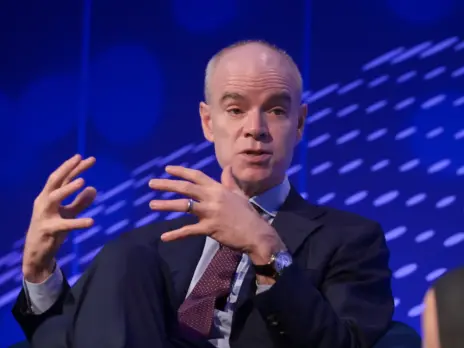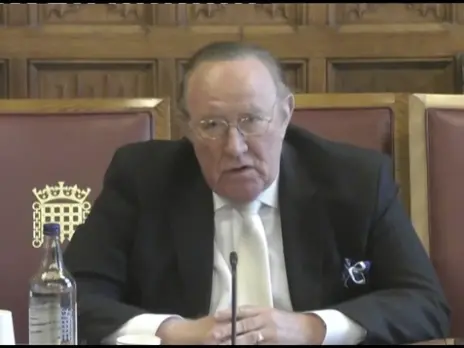
Welshman Clive Gammon, a sportswriter who travelled the world and met Pele, Maradona and Muhammad Ali, has died at Cefyn Coed Hospital in Swansea, aged 83.
He spent more than 20 years as a star writer for the US magazine Sports Illustrated when its circulation was more than 13 million, covering all the major sporting events including several Olympic Games, five World Cups and several Ali fights. He was on first-name terms with Ali, and was a friend of several other celebrities including James Hunt, the baseball star Ted Williams and Gareth Edwards, with whom he fished regularly.
In the UK, he was best-known for his fishing writing. He was undoubtedly the UK’s greatest angling travel writer and his books Castaway and I Know a Good Place detail many of the exotic places he visited, including Russia’s Kola Peninsula (he was the first angling writer to go there), Mongolia, the Falklands and Christmas Island.
Gammon played a pivotal role in exploring and publicising Ireland as a sea-fishing venue, and his fishing books on Wales are still considered classics.
He was born in Swansea on 29 March, 1929 to Sarah and Charles Gammon. His father owned an electrical shop in Swansea that closed during the Depression, and he became a schools inspector.
The BBC broadcaster Peter Jones was his first cousin.
His interest in fishing was inspired by his eccentric grandfather Willie Jones, who decided to emigrate to the US, didn’t like the look of the overground railway and came straight back to Wales. Willie caught his 100th bass from Swansea Pier using his gold watch chain as a weight, having lost all his other fishing leads.
Gammon went to Swansea Grammar School, and won a place at Oxford at just 16. It was felt this was too young and he was told to wait a year, so instead he went to Swansea University, though he completed an MA in literature at Oxford, writing his thesis on Izaak Walton. During that time, he became close friends with Kingsley Amis, mixing in a literary set that included Robert Service, Wynford Vaughan Thomas, Geoffrey and Mavis Nicholson.
Gammon started teaching at Stand Grammar, Manchester, in 1953 but soon moved back to Wales to Pembroke Grammar School. To supplement his teacher’s salary, he started writing fishing columns for Angling Times, The Field and Creel magazine.
His first book, Better Angling for All, was commissioned by John Arlott for Heinemann in 1963. His close friend, foreign correspondent George Gale, put in a word for Gammon at the Daily Express, and he wrote a weekly fishing column in the newspaper for most of the 1960s.
This brought him to a larger audience and he started covering sport in general for The Sunday Times under the pseudonym Nicholas Evans, a combination of his son’s Christian name and his first wife’s maiden name, but also a nod to Hemingway’s hero Nick Evans.
He was considered one of a trio of great sports writers of that era, the other two being Ian Wooldridge and Hugh Mcllvanney.
His writing caught the eye of Sports Illustrated, who started using him for sporting articles on anything outside the US. Gammon moved to London and became TV critic for The Spectator, taking over from Richard Ingrams. ‘It made me the only man in the world who earned his living by fishing and watching the telly,’he said.
When football became popular in the US, with Pele and Franz Beckenbauer playing for the New York Cosmos, Sports Illustrated had nobody who know about soccer and it offered Clive a full-time job. It meant moving to New York, and he took over a flat opposite Frank Sinatra’s apartment on East 72nd Street from George Plimpton, the famed sportswriter.
His contract demanded just 12 articles a year from him, though these often involved a great deal of research and an extraordinary range of travel. In 20 years with Sports Illustrated, Gammon covered almost every sport except the core US ones (ice hockey, basketball, American football and baseball) with an expense account and travel budget that would be unthinkable these days.
After he had covered a major event, Andre Laguerre, the magazine’s assistant managing director, would say, “Gammon, I suppose you want to go fishing now! Where do you want to go?”
Gammon recalled: ‘Once I told him for fun: Outer Mongolia. An hour later I found myself in the travel department (Sports Illustrated had its own travel agency) filling out a visa application.’He went on to catch a 70lb taimen (the largest member of the salmon family) there, which would have been a world record if he had bothered to record it officially.
When Shergar was kidnapped, Gammon was in Yucatan, Mexico. Sports Illustrated sent the company Lear Jet to pick him up, and he flew Concorde to London, and thence to Ireland to cover the story. He had VIP status at The Hyde Park Hotel in London and The Ritz in Paris. He flew first-class everywhere as one of the star writers, regularly producing the longer ‘bonus piece’at the back of the magazine.
Gammon had a brilliant eye for a story. He had written copiously about the sporting phenomenon of Liverpool, and when the Heysel disaster occurred in 1985, he was in demand all over the US as a commentator. Later, he even had the exclusive story from his Irish contacts about where Shergar was buried, but blabbed out the story at a dinner party and one of the other guests scooped him.
As Sports Illustrated took a more parochial (and cheaper) approach, Gammon found himself enjoying the job less so he retired and moved back to the UK. He spent some time in London, doing investigative articles for the Daily Mail and Mail on Sunday, among others, before returning to his roots in Caswell Bay, Gower.
A knee injury in Malaysia in 2006 severely limited his mobility and he moved into sheltered accommodation in Swansea in 2010, admitting: ‘I have to face it that I’m never going to go wading out into the surf or splashing waist-deep in salmon rivers again.”
Gammon married Divina Evans in 1957. They had one son, Nicholas and a daughter, Bridie. He married his second wife Juliette Harrison in 1978 and had one daughter, Lottie.
The funeral takes place at all Saints Church, Mumbles on 3 July at 1pm.
Email pged@pressgazette.co.uk to point out mistakes, provide story tips or send in a letter for publication on our "Letters Page" blog






